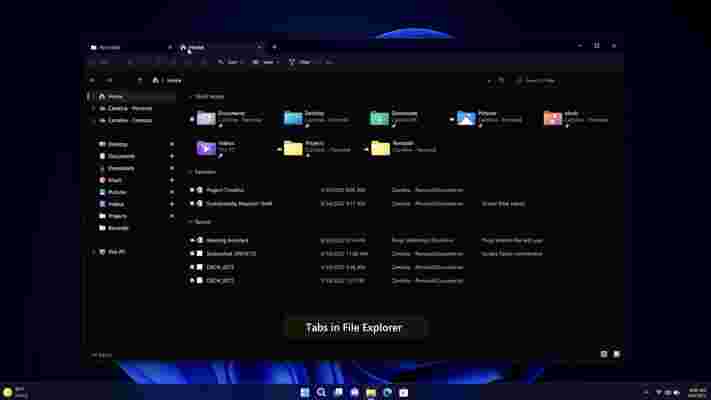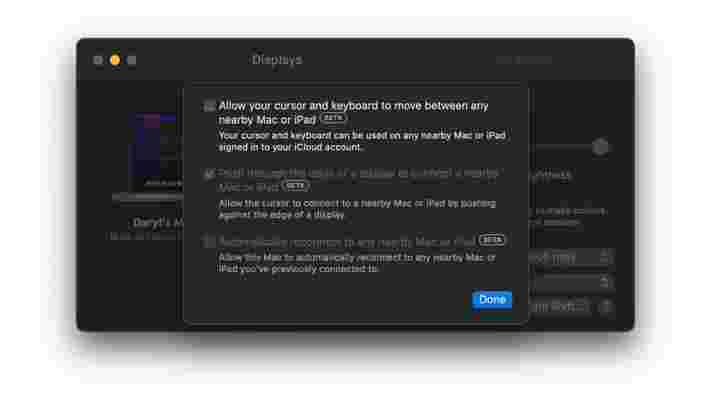
Since Windows 10 , Microsoft has had a consistent plan of updating Windows every six months with bug fixes and updates. This carried on for Windows 11 until Microsoft's recent event when it announced a bunch of features, such as tabs in File Explorer .
Four months into 2022, we've already seen two major updates. Normally, these would have arrived six months apart, usually named '2H22' to help reference the major update for that time.
There's been constant speculation on a big update to Windows 11 called Sun Valley 2 . All these current updates, however, make us wonder if we should still expect a major update with a codename for Windows, or if "Sun Valley" is now irrelevant.
Sunset for the Valley
Back in the days of Windows XP and Windows Vista , major updates would be called 'Service Pack', with new features and a collection of bug fixes that would arrive a couple of years after the original Windows release, and that would be it.
However, the way we use PCs in recent years has prompted Microsoft, and other companies, to refine their software over time, often in response to customer feedback, and also to make some features more prevalent than they once were.
Microsoft had been following a six-month timeline for major updates in Windows 10, and then a yearly schedule for Windows 11. But it's telling that we're already seeing rumored features for Sun Valley 2 already arrive now.

While we've reached out to the company to see whether the timeline of major updates has changed, it already looks to be happening. If you were waiting for a significant update to arrive, it's most likely coming in a smaller update in the coming weeks or months, instead.
It's a method that would be great for Apple to follow, as well. The era of yearly updates on macOS from WWDC has little meaning for anyone. Having a constant stream of minor updates could help users gain new features while keeping developers in the loop of what's coming up.
More incremental updates that are larger than the bug and relatively minor changes Apple delivers throughout the year could help Apple developers more effectively adapt their apps to these updates, as well. Otherwise, they're left scrambling to ready major changes in time for the typical September releases of the new macOS or iOS versions.
Such a change would be a good thing for Apple fans. On the Windows side, it's an adjustment in perspective. Sun Valley 2 has no meaning anymore - the new Windows 11 updates are either here already, or they're already in the Windows Insider program, which allows you to test features under development that may arrive in an official capacity.
It looks to be a new standard for Microsoft and Windows 11 as a whole, and we're all for it. Your move Apple.
With Universal Control releasing with macOS 12.3 and iPadOS 15.4 as a beta, some have been wondering if it's replaced a similar feature that's been available since 2019.
Sidecar was released with macOS Catalina in 2019, which allows users with a Mac to use an iPad as a second screen. You couldn't interact with the tablet in iPadOS. This feature would only display whatever you chose from the Mac.
But it's not had its time to shine in three years, with many wondering what the feature does, and how it works. Universal Control has only confused this further, with some wondering if it replaced Sidecar.
During my time using an iPad in 2021, I was able to get Sidecar working with my old MacBook Air (2013) , so I wanted to finally straighten out the differences between Universal Control and Sidecar, and how both can be used for certain situations.
What's the difference?
The best way to think of these features is to see Sidecar as a way of only displaying content, while Universal Control is a way to manage content between devices.
You can use your trackpad and keyboard to manage content between your Mac and iPad in Universal Control. But in Sidecar, you're essentially using macOS on both devices, so your Mac thinks it's connected to a second display only. There's no iPadOS when you're using Sidecar.
You're using a keyboard and mouse within this feature, similar to using three external displays in Windows 11 for example - same OS, but an extension of the display. That's what Sidecar's function is for your Mac.

In an Apple Support document, it details the requirements to use the feature and it explicitly states that you can use AirPlay for Sidecar to work wirelessly or a lightning or USB-C cable to connect your Mac and iPad to also enable Sidecar.
But in Universal Control , you only have to make sure that your Mac and iPad are on the same Wi-Fi network and the same iCloud account. As long as they're both in close proximity to one another, you can use your trackpad or mouse to switch over to the iPad, with no effort necessary to enable the feature.
Sidecar is still a useful feature in 2022, especially if you have an old iPad somewhere. Using a Mac with an external display can be a great help if you're doing work, watching a movie, or playing a game.
Even though Apple hasn't showcased Sidecar much since 2019, it's nice to know it and Universal Control can stand aside one another and can fit certain situations when needed, wherever you may be.
Images of early concept Overwatch 2 menus have been posted by a UI artist, giving some hints towards possible new features coming to the game.
Jayson Kirby, who worked on Overwatch between 2017 and 2020, has posted early concepts of the user experience for the sequel on his Artstation page . It shows off the minimalized UI that has been seen in previous Overwatch 2 gameplay reveals, making for a very cohesive look.
However, Kirby’s work also shows some insight into the possible additions coming to Overwatch 2. Most notable is the inclusion of a battle pass in the menus, which is not currently a feature of the Overwatch experience.
In the current version, the only real reward for continued play, past your character border and climbing the competitive ladder, are loot boxes that you receive when you level up.
A battle pass would offer a new way for players to upgrade and get rewards from continued play. Things like the Fortnite Battle Pass have become staples for each new season of content of Epic's battle royale, and have proven immensely popular.

Interestingly, battle passes are generally used in games that have a free-to-play element. It’s speculative, but this could suggest that Overwatch 2 may have some kind of broken-off section, like PvP, that is free.
In another UI example on the artist's page, there's an animation that shows a card for a guild that supports up to 520 players. This seems like it would be used as a way for like-minded players to find and play with each other.
Of course, all of these were worked on years ago, and Kirby hasn’t been on the project since 2020. It’s very likely the final design of the menus and the features have changed drastically since then. None of this should be considered a lock for the final product.
At the very least though, it shows that these concepts were at some point considered by Blizzard. Whether they make it into the final release is impossible to say. It seems unlikely a battle pass will come with the Overwatch 2 beta , which lands later this month, but with how the game is getting segmented from its PvP and its PvE, how all this works together, in the end, is anyone's guess.
Leave a Comment